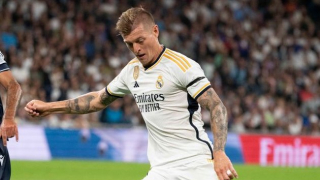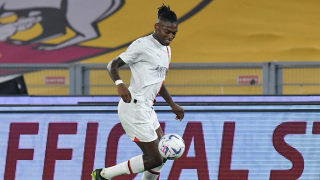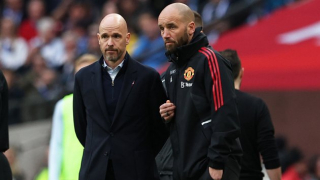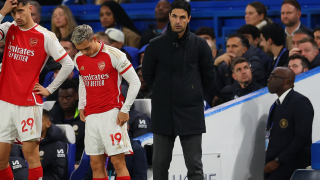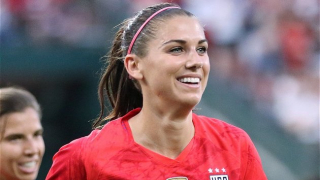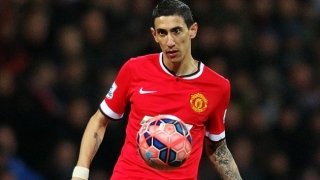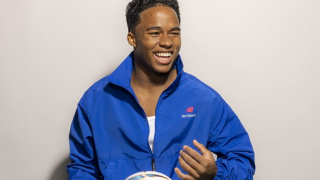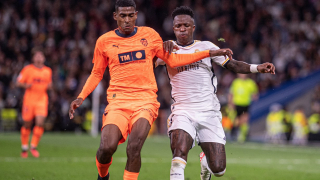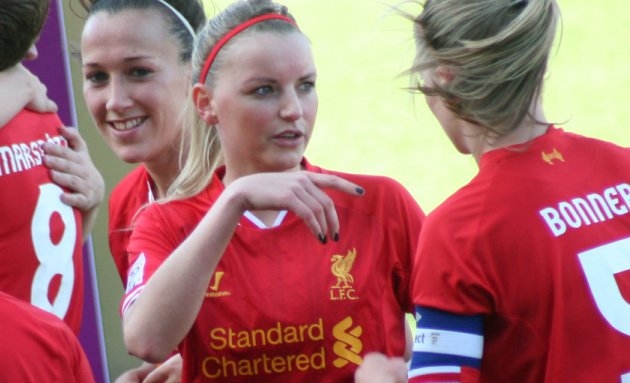This week we close out our review of the semifinals of the U-17 Women's World, the Oceania Women's Nations Cup, and group rounds and finals of the African Women's Cup of Nations. We also look at how to reduce the gap between New Zealand and the other island nation members of the Oceania Federation, which ultimately will require FIFA expanding the Women's World Cup from 24 to 32 teams.
U-17 Women's World Cup in Uruguay
Spain won the U-17 Women's World Cup for the first time earlier this month with a 2-1 defeat of Mexico in the final game. Claudia Pina (FC Barcelona) scored two goals within the first 26 minutes of the match, with Mexico replying in the 29th minute through Houston, Texas Albion Hurricanes club-based Denise Castro. Pina finished tied for first on the goal scorers list among the 16 teams with Mukarama Abudlai (Northern Ladies FC) of Ghana, both finishing with 7 goals. Spain had previously finished runners-up to Japan in 2014 in Costa Rica and was third in 2010 in Trinidad and Tobago as well as in 2016 in Jordan. Mexico shocked many by making the final, dispatching CONCACAF rival Canada 1-0 in the semifinal, with Captain Nicole Perez (Guadalajara Chivas) scoring the winner from the penalty spot in the 25th minute, while Spain beat another surprising semifinalist New Zealand 2-0. Mexico had defeated Canada during the CONCACAF U-17 Women's World Cup qualifying tournament earlier this year and was confident entering the match.
For the third place match, New Zealand bested Canada with two early Grace Wisnewski (Hamilton Wanderers) goals within the first 12 minutes of the game to finish with a bronze medal. Wisnewski finished in second place for goals with three, along with Nicole Perez of Mexico, Jordyn Huitema of Canada (Vancouver Whitecaps) and Irene Lopez of Spain (Madrid CF). For both New Zealand and Canada, it was their best ever finish at the U-17 level. New Zealand's bronze medal was a great boost for the game in Oceania, which hosted the U-20 WWC in 2016 in Papua New Guinea and the first U-17 tournament in 2008. Former Canadian national team player (180 caps) Rhian Wilkinson was impressive in her first national team head coaching stint and at only 36-years-old is one to watch for the future.
Africa Women's Cup of Nations Review
In Group A, Cameroon finished atop of the group undefeated (7 points) while Mali was second with (6points). Cameroon defeated Mali 2-1 in the opener on Nov 17, overturning midfielder Aissata Traore's (Super Lionnes) 56th minute goal for Mali with defender Claudine Tcheno (Guingamp of France) and forward Ajara Nchout (Sandviken of Norway) scoring two minutes apart with about 20 minutes remaining. Host nation Ghana was picked by many to make the semifinals but finished with 4 points after losing a crucial match with Mali 2-1 on November 20, as forward Bassira Toure (AS Mande) scored a brace (one from the penalty spot) for Mali while Elizabeth Addo (Seattle Reign/Canberra United) pulled one back for the hosts with 25 minutes left. Cameroon's 1-1 draw with Ghana on November 23 also was key to condemning Ghana to miss the semifinals. Algeria finished at the bottom with 0 points but had 2 goals for and 7 against.
In Group B,South Africa finally fulfilled the promise that they have shown at the Olympic Games level by winning the Group (7 points) with Nigeria in second (6 points), Zambia third (4 points) and Equatorial Guinea fourth (0 points) The Nzalang Nacional were pathetic with only 1 goal scored and 18 against in their three games. Just days before the start of the finals, the African Confederation reversed an earlier decision to suspend them from the tournament in place of Kenya. Kenya had been practicing for months while Equatorial Guinea had to quickly bring a squad together with players that had not been training as a team; it's hard to imagine them surrendering on average 6 goals a game. The Federation needs to treat these rule challenges with timely standard procedures and not seemingly make decisions in a happenstance approach; it was an injustice to Kenya and ultimately to the other Group B participants, who all essentially had a walkover match against EG.
The Baynana Baynana started the proceedings with a bang, defeating the favored Nigerians 1-0 on November 18, with a late winner from forward Thembi Kgatlana, who played last season with the Houston Dash in the NWSL; her goal in the 85th minute was the difference for Desiree Ellis' side. Zambia defeated Equatorial Guinea in their first game 5-0, setting a tone that the West Africans either weren't prepared, didn't care about this tourney or both. Forward Racheal Kundanaji (Indeni) scored twice for Zambia. In the second game on November 21 in Cape Coast, Nigeria overwhelmed Zambia 4-0 with forward Ugochi Oparanozie (Guingamp of France) scoring twice, before swamping EG 6-0 on November 24, as former Liverpool forward Asisat Oshoala (now with Dilian Quanjian of China) scored a hat trick within the first 35 minutes and Oparanozie, forward Fran Ordega (Washington Spirit in the U.S.) and midfielder Rita Chikwelu (Kristianstand of Sweden) added singles. South Africa finished with a 7-1 win over Equatorial Guinea with Kgatlana scoring twice. South Africa tied neighbors Zambia 1-1, as Kgatlana's 8th minute goal was offset by Kundanaji's two minutes later, sealing Zambia's departure from the tournament, but they should feel proud of their efforts.
In the semifinals, Nigeria advanced to their eighth consecutive WWC finals after a goalless draw with Cameroon by winning 4-2 on penalties. South Africa clinched their first ever Women's World Cup berth with a 2-0 win over Mali, with Kgatlana (31st) and Ma-Indies defender Lebohang Ramalepe(81st) scoring the goals.
In the crucial third place match with the winner advancing to France, Cape Coast fans saw a goal fest with Cameroon—though despondent after their lose again to Nigeria in the knockout stage (losing the Final Game to Nigeria 2-0 in 2014 and 1-0 in the Cameroon hosted event in 2016)—advancing to their second WWC in a row with a 4-2 win over Mali, with goals from midfielder Ninon Abena (Louves Minproff of Cameroon) who scored twice, substitute Gabrielle Onguene (CSKA Moscow of Russian) and an injury-time clincher from defender Christine Manie (Nancy of France). Mali's goals came from Fatoumata Diarra (AS Mande) and Cameroon defender Aurelle Awona's (Dijon of France) own goal. Mali needs to continue to invest in their side, with 6 of their 21 CAF Cup of Nations Finals squad playing in France, and hopefully can make the 2020 Olympics in Japan
The final was scoreless with Nigeria winning the title for the 11th time in 13 events (and third consecutive time) by winning on penalty kicks 4-3. Thembi Kgatlana of South Africa won the Golden Boot with 5 goals.
Oceania Women's Nations Cup Review and Thoughts on the Future for the Confederation
New Zealand won the lone Oceania Federation 2019 Women's World Cup berth with a 8-0 final win over Fiji to take the OFC Women's Nations Cup, with Sarah Gregorius (Capital Football), Betsy Hassett (KR Reykjavik of Iceland) and Rosie White (Chicago Red Stars—who had 1 goal and 1 assist in 11 games last season and 4 goals and 1 assist in 22 games in 2017 with the Boston Breakers after two seasons at Liverpool) all recording braces. The Football Ferns jumped out to a 4-0 lead and were never in danger of being pulled back by Fiji. In the third place match, Papua New Guinea overran hosts New Caledonia 7-1, with Meagan Gunemba (Poro FC) scoring four times, twice in each half.
In the semifinals, Fiji defeated favorites Papua New Guinea in the all Melanesian battle behind two goals from Trini Davis (Washington Rush in the Seattle area) to make their first ever Oceania Women's Nations Cup Finals. The American born high-schooler Davis scored her brace and Fiji showed great poise in overcoming a missed penalty kick in the first half as well as falling behind to a 12th minute goal from Meagen Gunemba (Poro FC). Midfielder Cema Nasau, forward Luisa Tamanitoakula (both Ba FC) and forward Sofi Diyalowai (Labasa FC) all scored once for Fiji. PNG had appeared in the finals of the last three editions of the tourney. The last time they met, in 2010 OFC Women's Nations Cup, Papua New Guinea won 3-0 in a group fixture. Remember that Fiji had to go through the preliminary stage on home soil to make the Finals, edging Vanuatu, American Samoa and Solomon Islands earlier this year in Lautoka, their upset of Papua New Guinea is historic and hopefully a sign that Fiji will be a new regional force. Before this game, Fiji had beaten Papua New Guinea just once with a 1-0 victory in the 2007 Pacific Games in Samoa. The other Pacific Games meetings between the sides were:
1998 – Papua New Guinea 7-1 Fiji (Third Place Play-off)
2003 – Papua New Guinea 2-1 Fiji
2004 – Papua New Guinea 2-0 Fiji
2007 – Papua New Guinea 0-1 Fiji
2010– Papua New Guinea 3-0 Fiji
2011 – Papua New Guinea 4-0 Fiji
2015 – Papua New Guinea 5-1 Fiji
Papua New Guinea head coach Peter Gunemba had very positive words about his opponents after they progressed to the final at the expense of his team: "Congratulations to Fiji for a very good performance and I would also like to congratulate my girls for coming through to the semi-final. There were lots of things that we were not ready before came but we just want to thank God for bring us this far. I didn't expect the girls to play that bad today but it didn't happen according to my game plan, the way I wanted them to play. But they did their best to compete in the game."
Trina Davis has been an absolute superstar during this tournament and, even as the only import on her team, arguably is a prime reason why Fiji advanced to its first final and their best ever finish in the regional championship tournament (second), surpassing fourth place finishes in the inaugural edition in 1983—also in New Caledonia—and 1998 in New Zealand. Davis is bound for Grambling University next year and even though she and her teammates won't make the 2019 Women's World Cup in France, she is one to watch and for Fiji to build around and accommodate in the future, despite the expense and long trip bringing her in from the States. Head coach Marika Rodu and his Fijian players created history this tournament and we hope to see Fiji build on this platform and continue to come away with historic victories.
In the other semifinal New Zealand blasted New Caledonia 8-0 with Emma Rolston (MSV Duisburg) scoring a hat trick, along with a brace from Rosie White and singles from Betsy Hassett (in the first minute), Katie Bowen (Utah Royals in the NWSL) and Paige Satchell (Auckland Football Federation); the Football Ferns coasted to a 7-0 lead at the half.
TheFuture of the Oceania Nations Cup Tournament—Expanding the Women's World Cup Finals Field is One Solution
The 2018 Oceania Nations Cup will be viewed as a strong tournament (this reporter watched multiple games online and largely they were engaging and interesting matches), particularly for Fiji but also PNG and New Caledonia, with more parity among the island nations, but New Zealand, with a +43 goals difference in five games, including a 10-0 group victory and 8-0 championship game over runners-up Fiji, is still a monster in the region and begs the question as to what should happen next in order to grow the women's game among the Confederation's other 14 members as well as for nations and dependencies in the region that are non-OFC members, such as the independent Federated States of Micronesia, Palau, Wallis and Futuna (France), Nauru (independent but closely aligned economically to Australia) and the Marshall Islands (the U.S.). There has been talk for years, particularly on the men's side, of the Oceania region nations working in conjunction with the Asian Confederation. Ten years ago I covered the men's World Cup final intercontinental play-in between New Zealand and Bahrain in Wellington. Bahrain missed a penalty and New Zealand scored for a 1-0 game win and 1-0 aggregate triumph over the two legs. New Zealand went on to finish WWC 2010 in South Africa undefeated, but did not advance to the Group Stage. After that Wellington match, in an interview with a New Zealand Football Federation official—after Australia had left Oceania for the AFF in 2006—he felt that Oceania should still remain independent but work with the Asian Football Federation to give the region an automatic World Cup berth. Even with 32 teams on the men's side, Oceania still has a 0.5 berth, having to play off against another federation, losing to CONMEBOL's Peru on aggregate ahead of last summer's tournament in Russia.
With the change to 48 men's side for the 2026 World Cup, there is talk of Oceania having a direct berth, but also a suggestion put forth by respected Australian journalist and football announcer Michael Cockerill (who tragically passed away last year) of splitting the AFC into two Confederations, an east and west unit, with Australia and other east Asian teams such as Japan, North Korea, South Korea, Singapore and Thailand (a total of 20 nations) joining with the 12 from Oceania, while the central Asian and West Asian nations would join together (25 teams) as a regional federation for World Cup qualifying. Parsimonious though the idea sounds, whether the Asian Confederation would split into two would come down to economic and political (i.e. FIFA Voting block issues among them) considerations. Additionally, merging Asian and Oceania nations would end the dispute over New Zealand's Wellington Phoenix playing in Australia's A-League as a non-Asian Confederation franchise—they have been granted an exemption for a few years but it is an issue that keeps coming up. Though financially a challenge currently, this could open a path for an Auckland or Wellington side to join the Westfield W-League and help to build the domestic women's game in New Zealand with stiffer competition (though every year a few New Zealanders have played for W-League clubs, but having an entire New Zealand-based franchise is a different story).
Currently on the women's side, with 24 teams in the last two Women's World Cups, New Zealand has utilized the sole Oceania berth with little competition from its other OFC members. In order to grow the region, a second and third place side in the Oceania Nations Cup could be allowed to play off against a sixth and seventh place team in Asia (this year that would have been the Philippines and Jordan) or include playoffs with some other teams in other regions (CAF, CONCACAF, CONMEBOL). In order to not take away a place from any Confederation currently, this would work if the Women's World Cup could be expanded to 32 teams for 2023, which is unlikely. (This reporter felt that the women's game was strong enough for the 2011 WWW in Germany to have 24 rather than 16.) An expanded Women's World Cup would help Europe as well, as there were some quality sides that just missed qualifying for France by a point or two, notably Iceland, Wales and Austria, plus Switzerland, Belgium and Denmark all fell in the playoffs among the best second place squads, losing out on the lone group runners-up slot to the Netherlands. Adding 8 more teams could allow another 2-to-4 European sides entry, which would also increase the chances of an Eastern European team besides Russia making the tournament for the first time. The argument that the tournament would have too many lopsided games is moot in my mind—there will be the occasion team that is mismatched but the women's game has improved globally so quickly that this line of reasoning is baseless. It comes down to if FIFA wants to invest in the game and possible take on financial losses from hosting the expanded tournament.
Without the opportunity for any side other than New Zealand to advance, the Oceania Cup of Nations will always have this competitive gap and New Zealand will seemingly automatically advance on the women's side. The primary importance is the growth of the game in the OFC—we saw teams like Cook Islands, Samoa, Tonga and hosts New Caledonia using imports from Australia, France, New Zealand and the United States during the tournament, while Fiji had the mercurial talents of Trina Davis. With a more realistic chance to advance to a Women's World Cup or even Olympic or FIFA age group finals, countries will invest more in leagues, youth development and exploring their diaspora abroad, rather than preparing teams only for the regional Pacific Games every four years (which acts as a regional qualifier to play New Zealand for an Olympic Games berth) or Women's World Cup Qualifying Tournament.
Tim Grainey is a contributor to Tribal Football. His latest book Beyond Bend it Like Beckham on the global game of women's football. Get your copy today.
Follow Tim on Twitter: @TimGrainey


